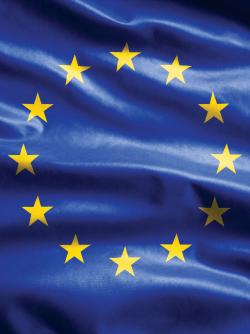The Two Faces of New Year’s Celebration
Have you taken an honest look at the traditions behind the revelries?
Ah, the new year. For millions, it is the traditional time to look forward and back. But why? Where did this concept come from, and why such wild celebrations to see one year end and another begin? And why do people make resolutions to do better than they have during the past year?
Tomorrow’s World readers may rightly expect that the answer is much the same as for so many other festivities, such as Valentine’s Day, Easter, Halloween, and Christmas: rank paganism. Once again, in New Year celebrations mankind has turned to the creation rather than the Creator, establishing its own traditions, ignoring the commandments of God (Matthew 15:3–9).
A Long History
New Year observances reach far back to Babylonian springtime fertility rites, associated with the renewal of the land after wintertime. Evidence even suggests that the Babylonians were the first to make New Year’s resolutions as part of divination of what the new year was to bring.
The Romans worshiped Janus, their god of doors and gates. He had two faces, one looking forward and one looking back. When Roman emperor Julius Caesar in 46 BC established January 1 as the Roman New Year’s Day, he named the first month “January” after the god Janus, setting the month as the “door” to the year.
But is the middle of winter the appropriate door of time to begin the year? When giving Israel the Holy Days, God said His people should begin the year in the spring (Exodus 12:2; cf. Deuteronomy 16:1).
Another widespread tradition, using a baby to signify the new year, began in Greece around 600 BC. They honored Dionysus, their god of wine, by parading a baby in a basket, representing the annual rebirth of that god as the spirit of fertility (Sir James George Frazer, “Dionysus,” The Golden Bough, 1922). Egyptians also used a baby as a symbol of rebirth.
Ancient Romans believed that loudness, lewdness, and drunkenness at the start of the new year would confuse the god Pan—and other malicious gods—preventing them from interfering in the everyday lives of mortals for the year to come.
The Scottish people mark the coming of the new year by observing a holiday they call Hogmanay. This celebration emerges from their history of Viking invasions, superstition, and ancient pagan rituals, and is known for heavy drinking and carousing into the early hours of the morning.
What to Do?
But are wild celebrations, widespread public drunkenness, and perverted behavior appropriate for reasonable, thinking human beings—and especially for those who call themselves Christians? What does the Bible say? “Now the works of the flesh are evident, which are: adultery, fornication, uncleanness, lewdness, idolatry, sorcery, hatred, contentions, jealousies, outbursts of wrath, selfish ambitions, dissensions, heresies, envy, murders, drunkenness, revelries, and the like; of which I tell you beforehand, just as I also told you in time past, that those who practice such things will not inherit the kingdom of God” (Galatians 5:19–21).
No, we do not need to pretend that the civil calendar—often rightly called the “Roman calendar”—does not exist. Christians can make and keep appointments on that calendar. But there is nothing new—or of God—in the world’s New Year celebrations. They are as old as the works of the flesh. And God has condemned such works from the beginning.
So, how should we conduct ourselves as Christians? The Bible makes it plain: “Therefore you shall be careful to do as the Lord your God has commanded you; you shall not turn aside to the right hand or to the left. You shall walk in all the ways which the Lord your God has commanded you, that you may live and that it may be well with you, and that you may prolong your days in the land which you shall possess” (Deuteronomy 5:32–33).
Learn more about the calendar God Himself established for His people. Read The Holy Days: God’s Master Plan online at TomorrowsWorld.org, or order your own free printed copy. You’ll be glad you did!






